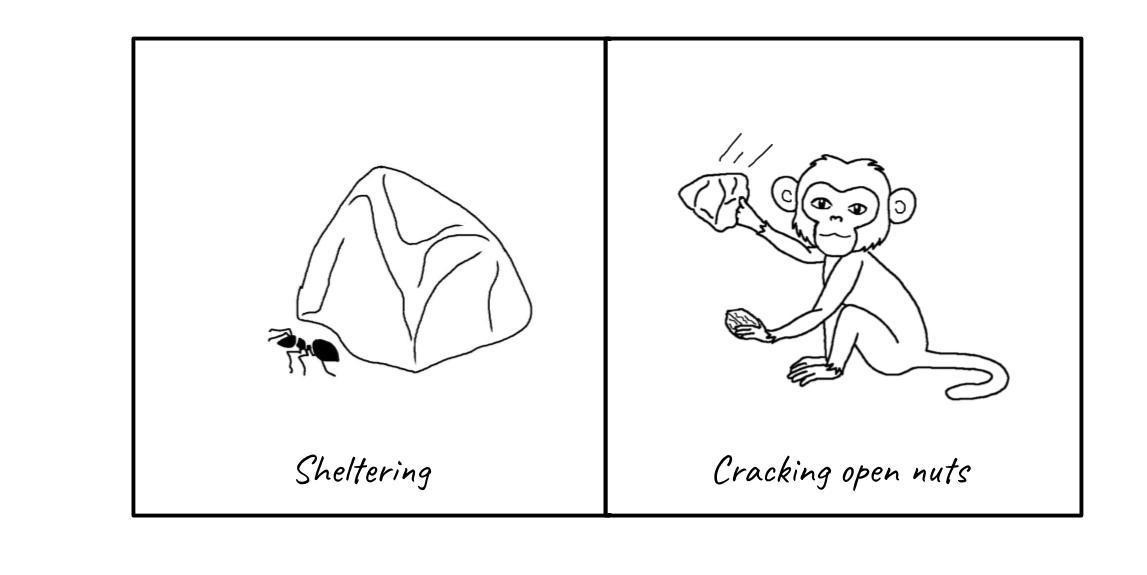Choice overload? A simple tool to select the right technologies
Choice overload? A simple tool to select the right technologies
Rudmer Abma, Ileana Maris-de Bresser, Nienke Renting
In a world where only nerds and tech freaks can really understand the workings of various technologies, deciding which IT to use can be daunting. So, how do you choose what information technology (IT) can help your organization to reach its goals? IT can help organizations become more effective and efficient and will help you achieve your strategic goals. Therefore, it is essential to understand how to use IT as effectively and profitably as possible. We have developed a simple tool, grounded in theory, that will help you select the IT that is just right for your organization.
Affordance theory is especially a valuable lens to capture how the use of specific technologies can, or cannot, help reach particular goals. The concept 'affordance' was first used in biology to describe how various animals could perceive a given object very differently in terms of what they could do with it (see Figure 1). For example, ants can use a rock for shelter, whereas monkeys can use it to crack nuts. For ants, a rock affords something different than for monkeys. So affordances are properties of objects which show users the actions they can take.
This concept also very well applies to the interaction between humans and technology. Markus and Silver (2008) argue that specific user groups, for example, marketeers, will perceive a technology as affording different possibilities for action than office managers, because they have other objectives. In contrast to affordances, constraints are the possibilities for action not afforded by specific technologies. For a marketeer, email affords providing practical information to customers, while for an office manager email affords interaction with its colleagues. A constraint of email is, for example, that it does not enable face-to-face, synchronous communication.
Figure 1. Different affordances of a rock for different animals.

Let us look at the influence of affordances and constraints of specific technologies on strategy implementation. Making a connection between the affordances and constraints of technologies and various strategic objectives provides a better understanding of the influence of the usage of specific technologies on strategy implementation. This connection is made by first distinguishing between the strategic objectives and the affordances and constraints of technologies. After that, you bring all results together in one model (see Figure 2). This model allows you to get a more refined overview of the mix of technologies that will help you achieve your goals. Strategic objectives are typically formulated on the organizational level, whilst the usage and functionality of the technologies relate to the functional or even individual level. Therefore, it is insightful to add these levels to our model. So define the level of the strategic objective, and of the affordances and constraints of the technology.
Figure 2. A four-step process model.
So now let's have a look at an example from digital marketing to get a better feel of the model. Table 1 distinguishes between different technologies used for digital marketing. The model gives a refined and generalizable overview of what possibilities for action these technologies afford or constraint, and how these can help achieve the various digital marketing objective(s) (see Table 2). The model also shows that the combination of multiple technologies enables us to reach our objectives via multiple digital channels. For example, various technologies (websites, social media, mobile applications, SMS and email) allow for delivering practical information to customers. Herewith, these technologies can enable us to grow our sales, improve customer service, save costs and extend the brand online. Finally, the model shows the constraints of the technologies which may limit the ability to reach a strategic objective. Often a smart combination and integration of technologies are needed to achieve goals — for example, big data analytics technology (BDA) and social media. BDA needs sufficient integration with a data generating, complementary technology (such as social media) because it is in itself not able to generate data.
Table 1. Model of the affordances and constraints of IT, and their implementation in digital marketing strategy.
Table 2. The 5 Ss model (Chaffey and Smith, 2017; Chaffey and Ellis-Chadwick, 2019). Digital marketing objectives and how they can be reached.
The presented model helps to choose the set of technologies that is just right for reaching organizational objectives. Treating the technologies as specific entities, that each afford or constrain particular possibilities for action, improves the understanding of the influence that these technologies can have on strategy implementation. This enables to decide which (combination of) technologies can help to reach strategic objectives. Managers sometimes need to be aware of the need for integration for the technology to become of value for their organization. It can also help managers to assess their current usage of IT critically. So, with this tool, no nerds and tech freaks are needed to choose what IT can help you reach your goals!
References
Chaffey, D., & Ellis-Chadwick, F. (2019). Digital marketing. United Kingdom: Pearson.
Chaffey, D., & Smith, P. R. (2017). Digital marketing excellence: planning, optimizing and integrating online marketing. United Kingdom: Taylor & Francis.
Markus, M. L., & Silver, M. S. (2008). A foundation for the study of IT effects: A new look at DeSanctis and Poole's concepts of structural features and spirit. Journal of the Association for Information systems, 9(10), 5.
